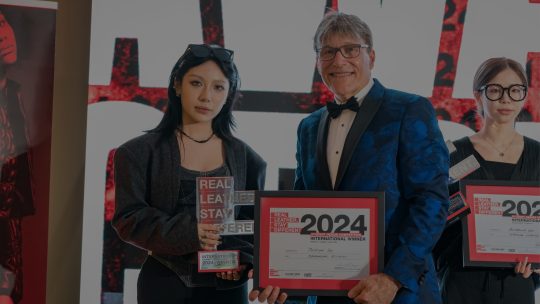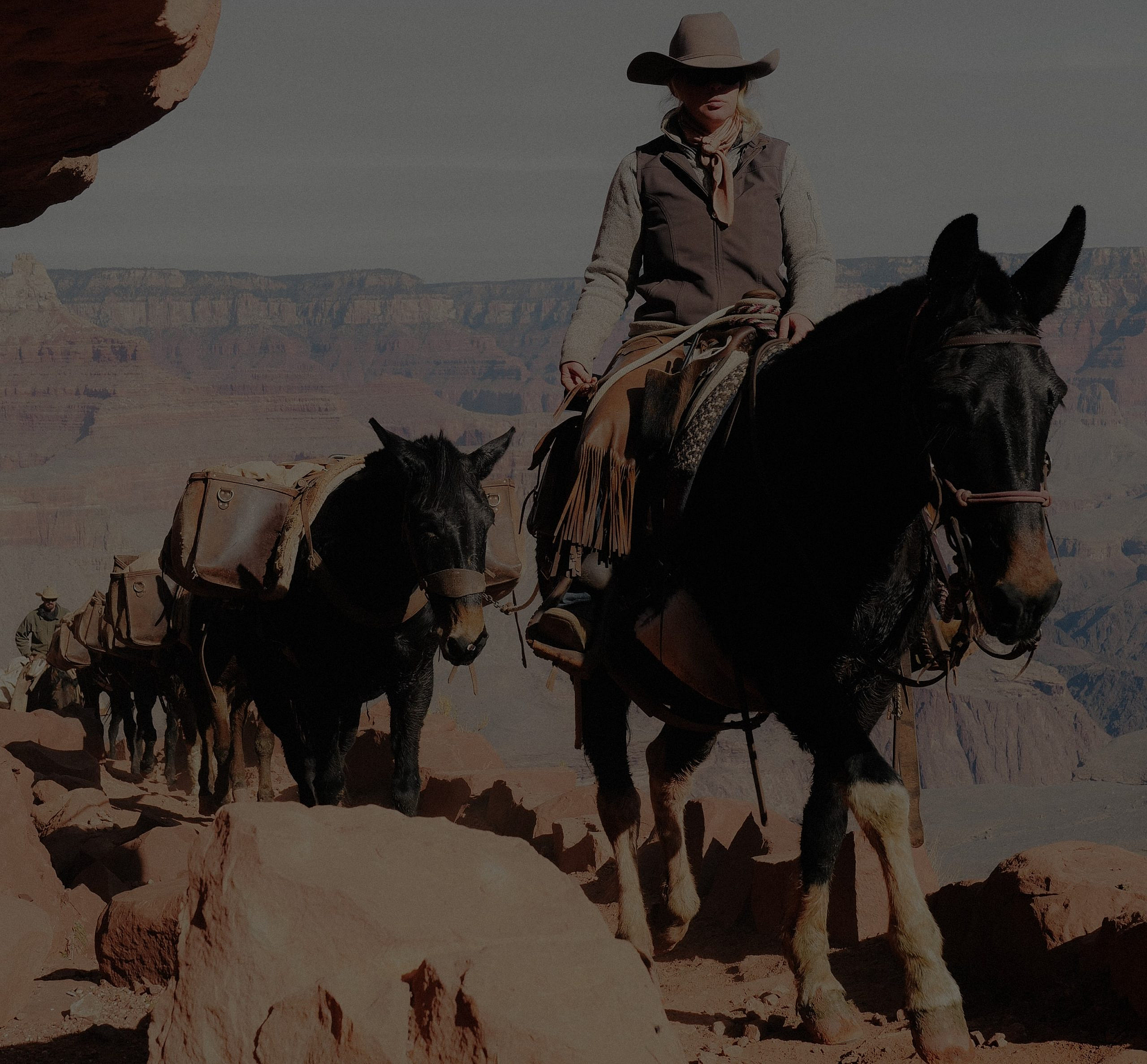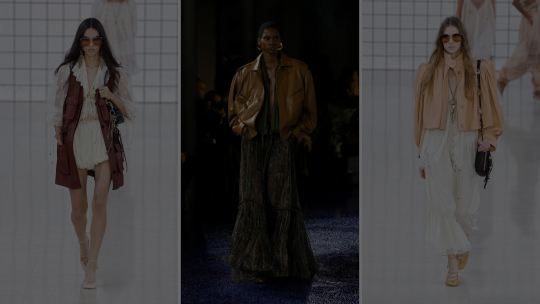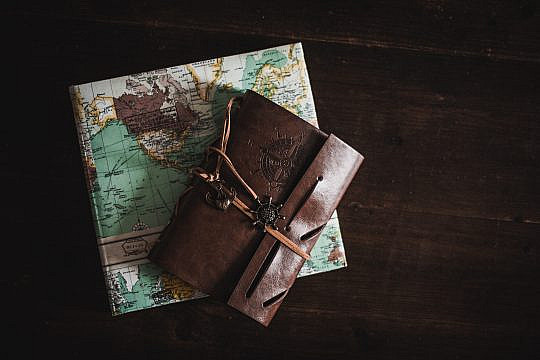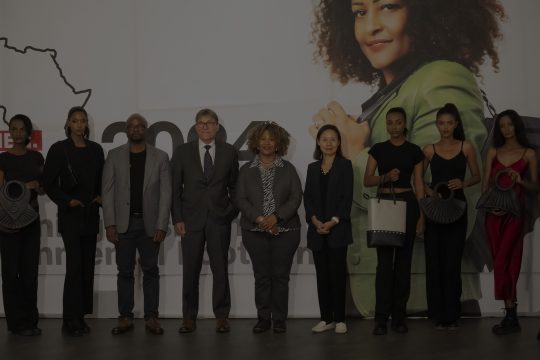Braydan and Misty Shaw own and run Burns 1876, a business dating back to the days of the wild west. And they have a mission to keep leather crafting skills alive. We had a chat about the company’s history, their love of leather and how they are mentoring a new generation of leather artisans.
Burns is a company with a fascinating history. Braydan takes up the story.
“Miles Lamonie Burns came to Utah in the 1860s with the pioneers that settled the area. He struck out on his own in 1876 when he was 13 years old. He opened Burns’ harness and blacksmith shop and he ran that business, mostly making working harnesses, until the second generation took over in 1898.
“They decided to move the business. They actually rolled the building on logs with a horse team up over the mountains to where we sit today in Salina, Utah. This was my great great-grandfather who started the stock saddle business.
“The third generation was my great-grandfather. He was the first person in our town to ride in an automobile. And consequently, he invented a collapsible storage pouch that went behind the seat of a truck or a car. And it carried your maps and your guns and things like that. He sold those all over the U.S. And we still always had the working leather shop. We made saddles and tack and horse blankets and things like that.
“And then my grandparents came into the business and invented the automobile seat cover. My great-uncle worked at an auto dealership. Back then the seats were made of vinyl, so they were hot in the summer and cold in the winter. And he came in looking for a blanket like our saddle blankets just to lay over his truck seat.
“And grandmother says, ‘Well, I can do you one better, come back tomorrow’. So, she put leather ends on it and made it so it fit his truck sear And that day the first 12 orders came in. That was the biggest part of our business from the early seventies to late nineties. We sold those all over the world. We had three shifts of sewers running and we just shipped them everywhere.
“My parents came into the business next. My grandfather passed away at 55, so my mother took over the retail side of the business when she was 28 and grew that into the largest single western store in the nation. We sold thousands and thousands of boots and clothes and hats. Then, in 2015, we started to make a transition. All the while we had the saddle shop and the leather shop, but they weren’t the biggest part of our business.
“We had retail locations in California and in Utah, and we were selling all kinds of workwear and western attire and tack items. Hundreds of bits for horses and reins and bridles and breast collars. And in 2016 we realized that some of our vendors were now our competitors online. Our 10,000 pairs of boots in stock didn’t mean as much when you have access to thousands on your phone. So we made a transition, a two year transition from 2015 to 2017 to really phase out of department store retail, and we focused on what we did best, which was the leather goods. That was our history and our heritage.
“So we really built up the saddle shop and started our own boot shop. We acquired a three generation, hundred-year-old, silver shop called Sunset Trails that did most of the Hollywood stuff from the 1950s. It was next to the MGM Studios and supplied John Wayne, Roy Rogers… Mant stars during that that era. Then we started the hat shop. We really started building the pillars of our current business—heirloom-quality boots and hats and belts and buckles and saddles.
“We’ve grown to where we have about a hundred craftsmen building all the different leather goods, the hats and silverwear. We do all of our production in Utah. The silver shop that we acquired in California, we moved to Utah and moved the craftsman with it. When we were building this part of our business and rebranding, rebuilding, we brought everybody into one location so we could collaborate and make sure that the craftsmen had opportunities. If they started in the saddle shop and maybe that wasn’t the best for them, they could work into the hat shop. So if they were good with their hands they could find their path.”
“We’ve since grown out of that 13,000 square foot space and moved the saddles and the boots shop to a 30,000 square foot facility. And now the hats and the silver shop just take up the remainder of the original building.”
In all those years of trading, there are bound to be a few brushes with fame. As well as the Sunset Trails connections with the film industry, Braydan tells us Burns’ founder had connections with a fabled outlaw.
Braydan: “Where the business was founded, by Capitol Reef, was just over the hill from the Parker family, which is Butch Cassidy’s family. About 15 miles away as the crow flies. We have a whip that Butch Cassidy traded my great great great-grandfather for some repair work that he did. He would, as he was passing through the little community, leave things for repair or things that he needed done by a tree. And my grandfather would do the work, leave them by the tree, and as Butch was passing through, usually in the night, he would pick them up.
But it doesn’t matter how strong your heritage is, you have to look to the future.
Misty: “We acquired Shop Talk! magazine, which is the oldest leather trade magazine in the U.S., and that’s our passion project. This is our way to give back by sharing our knowledge. We started the online learning platform Illum Atelier nd realized the market was hungry for more information. Hungry to learn more than you could just get by watching YouTube. Our industry hasn’t been great at working to keep the knowledge going forward. And leather craft is not taught readily in universities for the most part in the U.S. We saw a real opportunity to help the community with the magazine and the online learning platform—we’re able to share our knowledge and unite the leather community.
“For people who are looking to get into it for a career or develop their skills as craftspeople, there’s not a path laid out for them. So, we’re hoping to create a curriculum where they can learn those foundational skills and really grow as craftspeople and make a living at something they love to do. We’re also trying to teach them how to run a small business and teach them how to market their products to their communities. Because we’ve found also that although a lot of them are incredibly talented at their art form, they’re terrible at business. So, there’s also that gap to fill.”
Aren’t they worried about enabling future business rivals?
Misty laughs: “As the saying goes, a rising tide lifts all boats. I’d rather be part of that. I feel like, you know, you get what you give. So, if we can give something really, really great to this community, I know we’re giving back.
Misty is very optimistic about the future of leather.
“It’s amazing how many young millennials and even Gen Zers come in and purchase a thousand-dollar pair of boots. I think there’s a growing segment of that community that appreciate things that will last a long time. They like the heirloom quality appeal. They know if they buy right once it’ll last longer. And I think there’s more of that sentiment with this generation than there was even with my generation.
“With the younger generations we’ve seen a shift in their thought process on the type of products that they want. And they appreciate higher quality materials. And I think the story’s easy to tell. It’s a sustainable natural resource and people become attached to that once they really understand the damage that plastics and all those synthetics that vegan leathers do to the environment.”
How do they make sure the leather they use is produced sustainably?
Braydan: “We use Hermann Oak and Wickett and Craig, who are well established. We have established a relationship and trust them so we can be open and honest with our communications and our concerns. We’re able to have those conversations… About the material, about how it’s processed.
“It shows those who are really progressing and growing as tanners are the ones that are more forward thinking and really trying to get better and improve their processes. Those that are super-focused on the bottom line and still have practices that aren’t great for the environment and aren’t trying to get better, seem like they’re getting smaller. I think there’s an awareness in the community.
“I think naturally, as craftspeople, we gravitate to those who are trying to do the best and make the best product and, it’s really helping them grow. We’re looking for the best.”
Of course, sustainability isn’t just about production, it’s about longevity and durability.
Braydan: “A large part of our business in the seventies to nineties was the repair of saddles. Things had got a little more industrial and production minded in the U.S. during that time. So we saw a big opportunity to fix these saddles that weren’t built to the same standards as ours were. So we’ve had a repair department since then. And, with building heirloom quality products, we’ll refurbish hats and boots, saddles and tack. We have a system where clients can send their products in to be refurbished.
Misty: “Braydan’s had a pair of boots, beautiful cognac boots that he’s had resoled and refurbished, I don’t even know how many times! We get them back after they’ve gone through that refurb process and it’s his favorite boot looking brand new again.
Braydan: “We don’t want to make anything that’ll end up in the landfill. We want something that can be repaired and passed down, you know? I have some iconic leather pieces from my grandfather. And they can be reconditioned and repaired so that I can use them, or my kids can use them.”
Listening to Braydan and Misty, it is clear that Burns is a business that, like leather, has a storied past, a solid present and bright future.
Find out more about Burns’ 1886 here.
Find out more about Shop Talk here.
